
Coordinator: National Centre for Scientific Research “Demokritos”
Women are particularly affected, as they tend to spend more time on childcare and elderly care tasks (OECD, 2020), Women at the core of the fight against COVID-19 crisis, OECD Policy Responses to Coronavirus (Covid-19) (Minello, A., 2020, “The pandemic and the female academic”, Nature). This can increase gender disparities in research careers in the long run, as career development relies heavily on the number and quality of a researcher’s scientific publications. A recent study based on an analysis of more than 300.000 reports found that women’s research output during the pandemic has declined significantly, with a disproportionate impact on early career researchers (Vincent-Lamarre, P., C. Sugimoto and V. Larivière, 2020, The decline of women’s research production during the coronavirus pandemic | Nature Index, Nature Index). Research based on publication data shows that while Covid-19 has driven economic research, the proportion of women researchers (especially in early and middle career positions) involved in pandemic-related research is significantly lower (by average at 12% of the total number of researchers) from the average (21%). The study also found that women, however, continued to work on their ongoing research, suggesting that they were less willing or able to contribute to the new literature (Amano-Patiño, N. et al., 2020, Who is doing new research in the time of COVID-19? Not the female economists, VOX, CEPR Policy Portal).
According to the recent released SHE FIGURES 2021, at both European and country level, women graduates were over-represented in the field of Education and under-represented in the broad fields of ICT and Engineering, Manufacturing & Construction and women were less represented in knowledge-intensive activities (KIA) in business industries compared to men at European level.
There is a need to quickly design new initiatives all areas of scientific research and create an urgent need for common standards use of data for research but also for the creation of the necessary services and products.
| Objectives |
|---|
| SO 1: Promote gender diversity in educational and research institutions SO 2: Support Promoting Innovation 4.0 and Gender Equality SO 3: Inspire and support female researchers |
Proposed Actions
- Action 1: Organization of informative/training whole day visits of young female pupils to Academic and Research Centers
- Action 2: Hosting of young female students for their dissertation in laboratories of Research Centers
- Action 3: Organization of workshops for young female researchers
- Action 4: Design and implementation of an international network with women researchers around the world. Networking / networking with women researchers around the world / Europe
- Action 5: Initiative to deconstruct established stereotypes of gender science and technology
- Action 6: Design and organization of 12 monthly interactive workshops of presentation of the work of researchers of Research Centers and Universities from Greece and abroad in relevant fields
- Action 7: Design and organization of 12 monthly visits of female students of high schools and universities to the laboratories of Research Centers and Universities
Milestones – Critical Points
- Collaboration with National Policies for Innovation in Greek Research Institutes
- Regional approach with the involvement of local Research and Academia foundations
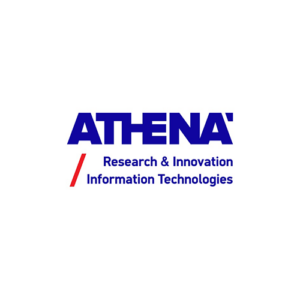
Coordinator: Athena Research & Innovation Center in Information Communication & Knowledge Technologies
Artificial Intelligence (AI) is developing fast and entails a number of potential risks, such as opaque decision-making, gender-based or other kinds of discrimination, intrusion in our private lives or being used for criminal purposes (European Commission, 2020a). In a world characterized by inequality, AI should not end up exacerbating the problems of exclusion. With regard to artificial intelligence, an integration policy must fulfill a dual purpose:
- ensure that the development of this technology does not contribute to increasing social and economic inequality, and
- the use of AI as a tool to substantially reduce these problems.
The situation in the digital sector, with women being represented to a lesser extent, while in relation to AI is worrying. Their under-representation in the field of AI leads, respectively, to the development of algorithms that will not take into account the gender dimension. But the very nature of digital technology can obscure bias so that we cannot say, for example, whether it comes from the artificial intelligence algorithm itself or from the data used to develop it (or both). For example, AI programmes for facial analysis display gender and racial bias, demonstrating low errors for determining the gender of lighter-skinned men but high errors in determining gender for darker-skinned women (Buolamwini & Gebru, 2018). Also, certain AI algorithms, when exploited for predicting criminal recidivism, can display gender and racial bias, demonstrating different recidivism prediction probability for women vs men or for nationals vs foreigners (Tolan et al., 2019).
But these remarks now raise fears among governments that if we act too late, we run the risk of seeing widespread skepticism about artificial intelligence on the part of the world, which in the long run could limit its development and all the benefits it could bring at the social and developmental level.
Also given that women in a machine learning system technology, up to now, does not provide us with an equal treatment, at the EU level, policies are being designed to meet this requirement through the tools and methods that will enable us to control these systems for their compliance with the institutional framework for Equality. According to the Public Consultation on the AI White Paper (European Commission, 2020b) 61% of respondents supported a revision of the existing EU legislative framework for liability, the Product Liability Directive, to cover particular risks engendered by certain AI applications.
AI cannot and should not become another tool for exclusion: it is a requirement of democracy to be a tool in a design for the digital future. AI provides enormous opportunities for development and these opportunities should be for the benefit of all, and especially for women who, despite constituting (approximately) 50% of the workforce, record low rates of participation in the IT market and even lower in the AI market Therefore, it should be ensured that AI applications for recruitment and evaluation in the labor market are transparent and do not codify/incorporate prejudices. This becomes even more urgent as there is an increased demand for specialized AI technologists (OECD, 2020b). With the current rate of women’s integration in this area, existing inequalities will worsen and widen.
Therefore, the main challenge we have to face with our proposed actions is, on the one hand, the elimination of obstacles and, on the other hand, the balanced distribution of the required skills to women and men. An inclusive artificial intelligence policy must embody a dual purpose.
- Ensure that the development of AI technology does not increase social and economic inequality.
- Use AI to reduce this inequality.

| Objectives |
|---|
| SO 4: Public Deliberation on Gender mainstreaming in AI policies SO 5: Interventions in the creation of data and their processing through AI that will incorporate SO 6: Awareness actions on the need for more women scientists to join AI |
Proposed Actions
- Action 1: Public Discussions / Deliberations regarding gender incorporation into AI policies
- Action 2:Initiatives for the creation and processing of data employing AI/OPEN & FAIR DATA
- Action 3:Actions to attract young women scientists to AI
Milestones – Critical Points
- Intervention to the National Strategy on ΑΙ
- Networking of the relevant schools in Greek Academia
- Developing and implementing an addition chapter in the curriculum of Career Counselling and Guidance delivered through Skills Labs
- Professional development on Supporting Educational Services on Career Counselling and Guidance
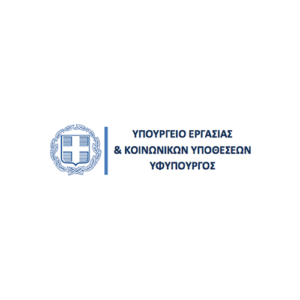
Coordinator: Ministry of Labour & Social Affairs
The pandemic is a major economic shock posing the risk of a further rise in unemployment. The unequal and direct impact of Covid-19 on the readiness of businesses and technology organizations to leverage digital tools can widen the gap with potential long-term implications for the cities and regions (Enenkel, K., 2020).
In recent years, Greece has been consistently posting the highest unemployment rate in the EU. The challenge of high unemployment has been persistent and well documented and women experienced an unemployment rate of 19.5%, compared to 12.8% for men. This requires the strengthening and disruptive reform of the national gender policy, supporting the transition into formal employment.
Through the strengthening and reform, the proposed measures seeks to:
- reduce women’s unemployment rates,
- upskill and reskill the women labour force,
- increase labour market participation of women on high and emerging technologies, and
- strengthen the links between education, training and the labour market focusing on STEM and addressing the relevant skills needs of the economy.
The #GIL4W Academy has as a clear goal to be an action and implementation tool for all relevant stakeholders by providing educational content and mobilizing our ecosystem to deliver training opportunities for women of all ages. To achieve this, #GIL4W Academy will provide a remote and presential training option for women in Greece who wish to leverage its content to upskill or reskill themselves in order to further or start their career or reimagine their career path. A course portfolio will be provided, ranging from exploratory to professional certification courses. In close collaboration with the Cisco Networking Academy a remote and presential training option for women in Greece will be provided who wish to leverage our content to upskill or reskill themselves in order to further or start their career in IT.
Host webinars for all women candidates will be provided including interventions from Cisco employees and potential other employers.
The #GIL4W Academy will be based on the EU Academy specifications including:
- Launch enrollment into professional courses
- Supervise learning progression of candidates and undertake regular webinars to stimulate interaction
- Creation of virtual job fair events to introduce candidates to potential employers 3 months before end of courses
- Leverage Cisco TalentBridge platform to have candidate profiles uploaded and sent to employers
- Provision of microcredentials with the successful completion of the cources
One of the key challenges to meeting this objective is the availability and accessibility of industry-recognized certification courses as few training institutes have developed blended learning models, thus making this training a difficult and often costly proposition for most ordinary Greeks.
In order to accelerate innovative initiatives towards digital transformation and e-skills, the innovation hub will be developed as a collaborative ecosystem between public organisations at central, regional and local level, to promote networking and science-based growth through co-innovation, create links between academic researchers, public organisations and civil servants and promote openness to end users to provide solutions in order to accomplish our target for better and more effective use of existing resources and build a more evidence-based as well more experimental innovation policy.
| Objectives |
|---|
| SO 7: Promoting Female Talent with Re-skilling & Up-Skilling SO 8: More Girls & Women in STEM Professions SO 9: National campaign to encourage women to participate in self-paced courses |
Proposed Actions
- Action 1: Operation of consulting office for young Greek women dedicated to education and vocational rehabilitation to promote of innovative ideas
- Action 2: Work experience opportunities for Greek women in modern and innovative companies
- Action 3: Greek Observatory for Women supporting #GIL4W dedicated to the education, employment, training, and skills development
- Action 4: Development of the #GIL4W Academy
Milestones – Critical Points
- Creation of an enrolment campaign introducing courses to learners in self-paced format
- Creation of a dedicated learning program for interested candidates going through to certification
- Leverage channel partner ecosystems and other partnerships to provide access to employers.
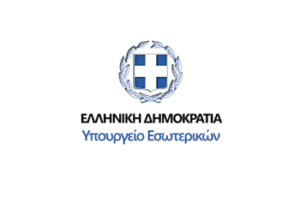
Coordinator: Ministry of Interior
Gender equality and the empowerment of all women and girls are universal goals in their own right, as explicitly set out in Sustainable Development Goal (SDG) 5 in the United Nations’ Agenda 2030 for Sustainable Development (UN Women, 2018). According to OECD, the OECD, gender equality and environmental SDGs are equally reinforcing, and any policy interventions should dive into any trade-offs and complementarities of these two sets of goals. When looking more specifically into the transition to a low-carbon economy, the focus should be both on environmental and climate change considerations and social sustainability issues. The gender-environment nexus can provide for a framework that strengthens both environmental and gender equality policies (OECD, 2021). At the same time, the EU is encouraging its member states to implement recovery and resilience plans that are not only building on a green transition but also on a digital transformation (European Commission, 2021). For countries like Greece, this could be interpreted into specific actions to increase women’s participation in new green jobs, that is decent jobs that contribute to preserve or restore the environment, in both traditional sectors such as manufacturing and construction or in new green sectors such as renewable energy (International Labour Organization (ILO), 2021), while at the same time advancing women’s engagement in green innovation.. Women need encouragement to participate more in science, technology and engineering studies with a view to increase their participation in the green and clean-tech industry (OECD, 2020a). Transitioning to green industry, if planned carefully, can promote a future that supports environmental sustainability and gender equality by decoupling economic growth from resource consumption and facilitating the systematic socio-political transformation needed to address social inequalities. In this process, closing the gender gap in the world of work is a key to accelerating sustainable economic growth despite the European Union’s declared commitment to gender equality, women are invisible in the EU’s flagship European Green Deal, UN’s reports on emerging countries emphasizes that women’s economic empowerment increases productivity and economic diversification (UN-Women, 2021). Unfortunately, despite the European Union’s declared commitment to gender equality, women are invisible in the EU’s flagship European Green Deal.
The Ministry of Labour and Social Affairs, through the Regional and Municipal Equality Councils and local Equality structures, aims to develop and implement a new operational reform based on innovation and supporting Greek regions to a digital and green economy transition. The alignment of regional development strategies with the central sectoral policies towards a digital and green transformation, is an important pillar for better governance, and for the creation of green jobs. The importance of highlighting the problems associated with addressing both the demographic problem and the targeted interventions required must also be emphasized.
The purpose of the proposed priority is to support the transition to a green economy by subsidizing the creation of new jobs at businesses that are either already operating in or are shifting their business model toward the green sector, with an emphasis on unemployed women.
It is considered necessary, to set up under #GIL4W, to develop the necessary know-how required in specialized and targeted projects at regional level towards a gender-environment nexus, looking into data and evidence gaps, economic and well-being benefits as well as governance and justice aspects.
| Objectives |
|---|
| SO 10: Enabling female participation in Green economy SO 11: Establishing Green regional partnerships |
Proposed Actions
- Action 1: Proposals to strengthen the network of WFPIS & ICPIS in the fields of research, innovation and entrepreneurship with a focus on green growth
- Action 2: Establishing Green Regional Plans to better enable female labour force participation
Milestones/Critical Points
- Collaboration with ENPE & KEDKE
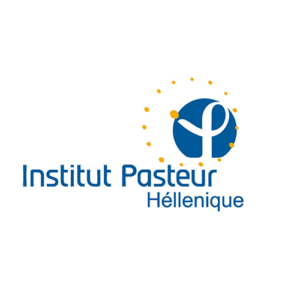
Coordinator: Pasteur Hellenic Institute
According to the World Health Organization (World Health Organization, 2016) “Women’s health is at a crossroads. Countries endorsed global efforts to advance women’s health by adopting the UN Agenda for Sustainable Development”. Gender is considered as one of the social determinants of health actors determine women’s health and well-being in Europe today – the social, economic and environmental circumstances that serve as protective factors for health and those that may alter the health status (illness or health) directly or indirectly. Education, work and income (including pensions, social protection and family policies), and environmental factors may affect women’s health and presents examples of processes that may increase women’s exposure and vulnerability to ill health, such as migration and economic crises. Gender and gender inequalities underpin the discussion, as they are important and necessary dimensions for fully understanding the social, economic and environmental determinants of women’s health and well-being. Sex and gender are important concepts for public health, because they are associated with epidemiology, symptoms, and prognosis of several diseases communicable and non-communicable diseases. Integrating the gender issues into biomedical research is necessary to achieve gender equality in the social impact of science. However, often a failure to consider potential differences between men, women and other genders in design of research, data collection methods, and analysis, produces and maintains gender bias in research outcomes. In public health, variation in health outcomes between social groups can often be explained by biological and sociocultural aspects of being assigned male, female, or intersex at birth. It is therefore essential that public health researchers possess the awareness, knowledge, and skills to adequately consider sex and gender throughout the research process
Promoting research and innovation that eliminates sex and gender bias in the use of medicines, service delivery and health promotion and identify and disseminate good practices, becomes one of the most important priorities. Further to COVID-19 impacts, our interests include preventive measures such as raising awareness about vaccination, birth control, etc. for women as patients but also as carers for their children and other family members. Most importantly, it critical to reduce inequalities in health particularly those due to gender, age and socio-economic status by highlighting that sex and gender are important determinants of health and our understanding how vulnerability to the onset and progression of specific diseases vary in men and women must be improved.
It is important to promote an equitable, gender sensitive approach in health policy, research, treatment and care.
The #GIL4W objective is to provide opportunities for further education in health issues in order to support public awareness about womens’ and family health issues across the country by conducting research and carrying out surveys, establishing and delivering training programmes, seminars and conferences on all aspects of health care. Another aim of #GIL4W is the integration of gender issues in the biomedical research process from the beginning and the training of young researchers to consider this parameter of paramount importance in the research and technology outcomes.
| Objectives |
|---|
| SO 12: Technology as the key to women’s Empowerment for health literacy and prevention SO 13: Establishing and delivering training programmes, seminars and conferences on all aspects of health care |
Proposed Actions
- Action 1: MOOCS for substantial, scientifically reliable information and to enable the treatment of gender inequalities in Health issues
- Action 2: Promote biomedical research at the level of education
- Action 3: Addressing the myth of gender biological determinism but also of technological determinism
Milestones – Critical Points
- Collaboration with National Action Plan for Public Health 2021-2025 aims
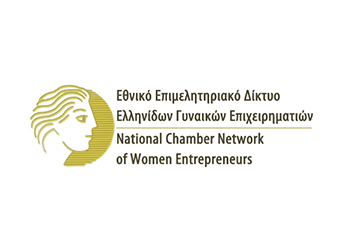
Coordinator: National Chamber Network of Women Entrepreneurs
SME policy frameworks pursue several policy objectives with regards to SMEs and entrepreneurship with some of these objectives focus on women entrepreneurs. Such policies generally aim to improve access of these groups to entrepreneurship. Examples include policies to support (high) growth of SMEs, innovation, digitalisation, start-up, access to finance and greening/sustainability. For instance, supporting women entrepreneurship may aim at improving access of women to entrepreneurship as well as supporting firm growth or innovation more generally. Also, access to finance constraints are more severe for women entrepreneurs, especially those starting up from unemployment.
According to the Greek Growth Plan (Pissarides Commission, 2020) “low labour market participation in Greece is mainly affected by the low participation of women. Among women, the percentage of active population in 2019 is limited to 60.4% in Greece, compared to 68.5% on average in the Eurozone and 67.9% in the EU, with Greece being in the third lowest position in the ranking of countries (higher only compared to Italy and Romania). The low labour market participation of women significantly reduces the country’s productivity, as the average educational level of women who do not participate in the labour market is high”.
The under-representation of women among entrepreneurs and business owners is in part linked to skills. More needs to be done to help women harness the opportunities created by the digital economy, including in acquiring ICT skills, Science Technology Engineering and Math (STEM) skills, management and communication skills, and entrepreneurship skills. Women still tend to have less experience in self-employment and continue to have fewer opportunities than men in management positions, which acts as a barrier to gaining management experience and skills that can be used in entrepreneurship (OECD/EC, 2018). Women are also less likely than men to feel that they have the skills, knowledge and experience to start a business. Moreover, women are less likely than men across OECD countries to report that they have access to training on starting and growing a business. It be explained by several factors, including low levels of awareness of available support, unappealing training programmes (i.e. the content is less relevant for the types of businesses that women operate), selection bias in programme in-take, or issues of accessibility (e.g. childcare services are not offered as part of the support programme).

Source: OECD (2018), “Entrepreneurship: Access to training and money to start a business, by sex”, OECD Gender Portal
In Greece, nearly one-third of working Greeks were self-employed in 2018 (29.1%), which was more than double the European Union (EU) average (13.5%) and regarding women rates, this score becomes higher (22.9% vs. 9.6%) (OECD & European Union, 2019). Also, unemployed women are less likely than unemployed men to seek self-employment.


There is a wealth of evidence that shows that, on average, women have relatively lower levels of entrepreneurship skills (e.g. business management skills, risk management, opportunity recognition, interpersonal skills) than the population average (OECD/EC, 2018). This typically means that they have less knowledge about the types of financing available and how it can be accessed.
Women entrepreneurs in the EU are about 25% less likely than their male counterparts to use bank loans to fund their business (OECD & European Union, 2019). Even when women receive external finance, they typically receive smaller amounts, pay higher interest rates and are required to secure more collateral (Lassébie, J. et al., 2021). In 2018, only 2% of European venture capital-backed technology investments went to all-female founding teams, while 34.4% of the EU self-employed and 30% of start-up entrepreneurs were women according to the European Institute of Innovation & Technology.
Fintech innovations may increase the supply of finance to inclusive and social entrepreneurship through the entry of new types of suppliers (e.g. technology companies) and by creating platforms that allow entrepreneurs to tap into large numbers of small investors or lenders (i.e. crowdsourcing). These new instruments and suppliers create opportunities for projects that might otherwise not receive external financing because they are judged by other market actors as too small, too risky, or because they have a social purpose rather than purely commercial goals(OECD & European Union, 2019). For example, some research shows that women entrepreneurs, on average, receive 1.3 times more contributors on crowdfunding platforms than male-led campaigns and raise 10.8% more money. One example of this approach is WILLA Women in Fintech in France, which is an accelerator programme for female entrepreneurs in fintech fields.
In terms of policy making, there is a need to be aware of the take-up of COVID-19 relief measures, which increases the risk of reversing the progress made in closing gender and age gaps in entrepreneurship design. COVID-19 relief measures can be better tailored to the needs of women entrepreneurship. For example, to strengthen support for female entrepreneurs through the pandemic and beyond, tailored business advice and consultancy could be introduced; greater financial support could be provided to the ecosystem for female entrepreneurship; gender disaggregated data about take-up of support measures could be collected and reported; and the policy making process could be more inclusive, including for example by setting up a high-level women’s entrepreneurship committee and using female entrepreneurship expert policy advisors to support the development of COVID-19 recovery programmes.
| Objectives |
|---|
| SO 14: Women-targeted education, mentorship and support programmes SO 15: Setting up women-dedicated business financial instruments to help them start quality businesses |
Proposed Actions
- Action 1: Organization and Development of a repository dedicate to Greek Women Entrepreneurship
- Action 2: Women Network of high technology and specialization SMEs and companies for consulting services towards new professional prospects to young graduate women and employees in Greece
- Action 3: Basic and Applied Research for Greek Women Entrepreneurship
- Action 4: Dedicated Series of Educational and Training Courses for Young Greek Women Entrepreneurs
- Action 5: Supporting and linking Greek spin-offs and start-ups lead by women researchers, scientists and entrepreneurs to the European and International Ecosystem of Innovation and Technology
- Action 6: Organization and Standardization of “Greek Women Innovative Entrepreneurs’ Award”
- Action 7: Design and development of a new mentorship program for the Greek young women entrepreneurs
- Action 8: Organization of specialised online webinars concerning women entrepreneurship
- Action 9: Exploitation of Entrepreneurship toolkit for the Greek Women Entrepreneurs
- Action 10: Liaison and networking activities with policymakers, stakeholders and business sector representatives
- Action 11: Access to funding opportunities for female entrepreneurs/startuppers/spin-off owners
- Action 12: Integrated digital applications(active policy instruments, virtual microworlds and massive online courses) for Upskilling, Entrepreneurship and Women’s innovation

Coordinator: Institute of Educational Policy
Around the world, governments, civil society and the private sector are introducing innovative approaches to girls’ education. UN strongly supports relevant initiatives to break through the barriers to fully harness innovation and technology and improve the quality of education for all (UN- EDUCATION, 2015). Pandemic affected education providing new online experiences and opportunities important for children’s and young people’s development across a wide range of areas, including : online education, access to formal and informal learning; being able to engage with their own creative and cultural practices; to express their ideas and opinions; to find employment, career information, entrepreneurship opportunities.
Innovation for Girls’ Education is a perfect theme for all the educational systems and recognizes the importance of preparing girls for a changing world; a world in which technology will play an increasingly significant role. It suggests the need for new ways of working, to provide quality education where ‘business as usual’ has failed. It speaks of the shift in the ‘girls’ education dialogue’ from one of access and learning, to one of empowerment. However, there is a gender digital divide: girls are disadvantaged when it comes to digital adoption, have lower levels of access to and use of digital technology than boys, and often they are not benefitting from digital technology in the same way as boys.
An ongoing issue is gender balance in STEM studies and careers. Across the EU-28, 14% of women graduate from an STEM field compared to 40% of male students. Therefore, the effort is focused on addressing the lower number of women who choose STEM studies. Several initiatives have been developed in this direction and include campaigns (eg Science, it is girl) and work programs (eg Sciences with and for Society).
With access to digital devices almost universal in the classroom or at home, teachers and students are integrating innovation into teaching practice and application. For example, the “tinkering movement” has shown that effective STEM hands-on training can also be achieved at a low investment cost or “low” device technology. Students participate and experiment with the object and are encouraged to try new approaches and make mistakes (Exploratorium Laboratory, 2021). Eliminating the negative perceptions that girls develop at a young age can lead them to a more positive approach to innovation when they are in the high school or the university. As long as boys and girls at a young age are exposed to science and innovation and are equally encouraged to study these disciplines, those with talent and a genuine interest in these fields will be able to develop innovation in their future studies.
Our interventions will focus on:
- Transforming trait, interest and aptitude for research of girls and women throughout formal elementary and secondary education, vocational training and lifelong learning
- Support objective of formal education, vocational training and lifelong learning curriculum to increase female students’ research self-efficacy directly and via attitudes of school teachers
- Merge entrepreneurial mindset of girls and young women with AI (access for technology know- how)
- Awareness actions on the feed of digital accessibility and AI of girls and young women and girls and young women in DEIS groups
- Encourage girls and young women to pursue Vocational Education, Training and Life Long Learning
- Strengthening links of formal education, vocational education and lifelong learning to economy and labour market
- Close the gap in labour market participation for girls (and women) of all backgrounds
- Merge entrepreneurial mindset of girls with green circular economy
- Enhancing Resilience to girls and women and of girls and women of DEIS groups
- Empower and encourage girls and women to overcome fear, persist through challenges and setbacks
- Develop Career Adaptability for girls and women and girls and women of DEIS groups
- Identify key challenges to getting started (learning opportunities and technology to succeed)
- Prepare girls and young women of formal education, vocational training and lifelong learning in entrepreneurial activities (planning, goal-setting) to engage in entrepreneurship and enhancing their entrepreneurship self-efficacy
| Objectives |
|---|
SO 16: Curriculum as tool to support research and innovation in formal education, vocational training and lifelong SO 17: Mitigating the gender and teacher’s bias with technology, digital skills and AI SO 18: Promoting the role of Vocational Education, Training and Life Long Learning in order to close the gap in labour market participation for girls (and women) of all background SO 19: Strengthening links of formal education, vocational education and lifelong learning to economy and labour market SO 20: School and Community collaboration and engagement in green circular economy SO 21: Enhancing Resilience to girls and women and of girls and women of DEIS groups SO 22: Empower and encourage girls and women to overcome fear, persist through challenges and setbacks SO 23: Develop Career Adaptability for girls and women and girls and women of DEIS groups SO 24: Creating mindset and opportunities for girls and young women entrepreneurs |
Proposed Actions
- Action 1: Monitoring and noting girls and young women’s participation in educational actions and programs referring to STEM, computational thinking, robotics, coding. Focus groups on DIES groups
- Action 2: Monitoring and noting participation of girls and young women in their study fields and vocational training specialization orientation
- Action 3: Empowering female teachers as Role Models coordinators in educational science research centers in the formal secondary education
- Action 4: Intervention of the kind of group counseling and/or activities to convert biased beliefs about research specialties of girls and women in research fields through Skills Labs interventions of formal education, vocational training and lifelong learning
- Action 5: Enhancing research self-efficacy beliefs, relevant interests, traits and skilling up of girls and young women via formal education, vocational training and lifelong learning
- Action 6: Actions to attract girls and young women of formal education, vocational training and Life Long Learning and of girls and young women of vulnerable and high risk groups to AI
- Action 7: Design and deliver teacher training programs to familiarize with AI
- Action 8: Design and deliver teacher training programs to challenge and deconstruct gender stereotyping about science and technology
- Action 9: Career Days inclusive with special focus on girls and women with the participation of women in modern companies. Focus groups on DEIS groups
- Action 10: Educational programs and camps of work experience opportunities, adult mentoring, volunteering, study visits for girls and women of formal, vocational and Life Long Learning training in innovative companies.
- Action 11: Intervention of the kind of group counselling and/or workshop entrepreneurial activities: coming up with new ideas, taking on new challenges, goal-setting)
- Action 12: Access to information about how to get started, how to access the social and financial capital and technology.
- Action 13: Design and deliver school teacher training programs for awareness about green circular economy. Focus groups on DEIS groups
- Action 14: Design and deliver school teacher training programs about school and community collaboration for green circular economy (community engagement)
- Action 15: Entrepreneurship courses, camps, programs for green and circular economy via formal education (“Skills Labs” ) vocational training and lifelong learning for girls and women and for girls and women of DEIS groups
- Action 16: Dissemination of good practices via formal education (“Skills Labs”) vocational training and Life Long Learning such as girls camps, entrepreneurial competitions, girl’s days for green circular economy
- Action 17: Real life access to Role Models of entrepreneurship ventures about green circular economy
- Action 18: Support a national project through Centers for Environmental Education (Κ.Π.Ε.) in joint activities with the Local Women’s Cooperation
- Action 19: Educational and experiential courses or programmers for enhancing resilience
- Action 20: Intervention of the kind of group counseling and/or activities to develop career adaptability
- Action 21: Intervention of the kind of group counseling and/or activities to develop peer counselling of young women
- Action 22: Intervention of the kind of group counseling and/or activities to help girls and young women of formal education, VET and lifelong learning, to aspire about their entrepreneurship potential and mindset
- Action 23: Design and deliver teacher training programs to enhance their resilience and career adaptability
- Action 24: Design and deliver teacher training programs to implement actions involving girls and young women in entrepreneurship projects
- Action 25: Entrepreneurship courses, camps, programs via formal education (“Skills Labs” ) vocational training and Life Long Learning for girls and women and for girls and women of DEIS groups
- Action 26: Educational programs and “Girls Scout teams” (“try on” entrepreneurship in small safe places where girls and women in opportunity groups get hands-on practice)
- Action 27: Dissemination of good practices via formal education (“Skills Labs”) vocational training and Life Long Learning such as girls camps, entrepreneurial competitions, girl’s days for digital, green technology and entrepreneurship
- Action 28: Real life access to Role Models
- Action 29: Career Days inclusive with special focus on girls and women with the participation of young women entrepreneurs
- Action 30: Educational courses or programs via formal education, vocational training and Life Long Learning about social entrepreneurship and AI
- Action 31: Access to information for young women about how to get started, how to access the social and financial capital and technology
